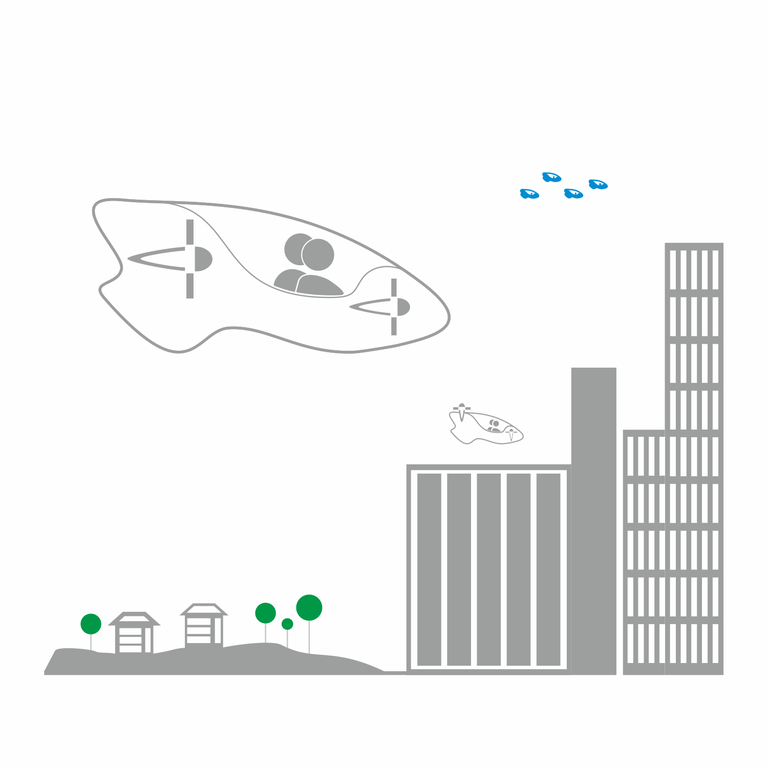
Urban/ regional mobility
The mobility demands of the future must lead to stronger connectivity of transport modes. Current transport concepts focus strongly on the vehicle, the mode of transport, but in urban areas in particular, people are increasingly moving 'fluidly' through their environment. Digital networks enable instantaneous rescheduling of routes using actual data and passengers can choose alternative routes and/or other modes of transport at any point in time. These capabilities will have a lasting effect on the design and operation of transportation platforms. With a view to air transport, operational concepts for electric flying, automated/ autonomous control and monitoring of flying platforms, and efficient connectivity to other modes of transport represent the key challenges.